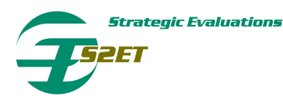S2ET has no set process or formula to assist organizations to achieve excellence. Every organization is unique in its history, culture, organizational age, budget, staffing and challenges. That is why it is important to “Partner” with the organization to achieve maximum results. Listed below are several case studies. START UP ACTIONS: Being a startup it was easy to implement best practices in the ten functional areas of nonprofits in the very beginning and achieve board buy-in. PAYOFF: The organization went from 0-90 corporate members in the first year due to an aggressive marketing campaign based on building value for members by lobbying the legislative issues facing the industry. In subsequent years the association ended up with 98% market penetration in membership and added award winning education and certification programs. Because of the groundwork of organizational excellence that was adopted in the beginning the association went on to win “Chapter of the Year Award,” from its national organization, in only its 3rd year of existence. Conducted the CEO Search for the organization and it has won the award in two subsequent years. FINANCIAL TURNAROUND ACTIONS: Following the Striving for Excellence Evaluation (SFE) expenses were decreased by $213,000 due to reorganization of staff and elimination of programs with little value, a renegotiated office space lease and moving headquarters saved $350,000; saved $400,000 the first year rebidding professional service contracts for insurance, publishing, fulfillment, marketing, travel, legal and accounting. Increased revenue by identifying membership value propositions and securing revenue sources from dues, sales, conference, educational programs, and starting a long envisioned certification program. PAYOFF: Based on SFE recommendations implemented systems to monitor financial performance which resulted in the elimination of the long term debt, first positive fund balance and $100,000 net profit in first year. Also conducted first board of directors training to assist them in understanding their fiduciary responsibility so they would not end up in this position again. Introduced long awaited chapter, special interest groups and certification programs that brought in much needed revenue to contribute to turn around and create value for the members and organization. PROGRAM and FINANCIAL TURNAROUND ACTIONS: The Striving for Excellence Evaluation (SFE) recommendations, which consisted of 120 pages, found that the organization did not meet any of the ten functional criteria even though the organization had been managed by a CEO who had the Certified Association Executive (CAE) designation and had lead them for 25 years. What was supposed to be a six month assignment was extended so the interim CEO and Board could adopt and begin implementing the organization turnaround plan before a new CEO was hired. Contracts were terminated, staff and board members resigned, policies were put in place for best practices management, request for proposals for new suppliers were sent out and new contractors hired. All the while the CEO Selection Committee worked with the interim CEO to hire a CEO that would be the perfect fit for the organization based on current status of the organization and where it wanted to go with its new strategic operation plan. PAYOFF: A new CEO hired and because the organization had solved many of the long standing problems the new CEO was able to hit the ground running. Because an operational excellence plan was in place and the Board was working the plan, the organization was awarded “Chapter of the Year Award” by its national organization, during the new CEO’s first year. |


